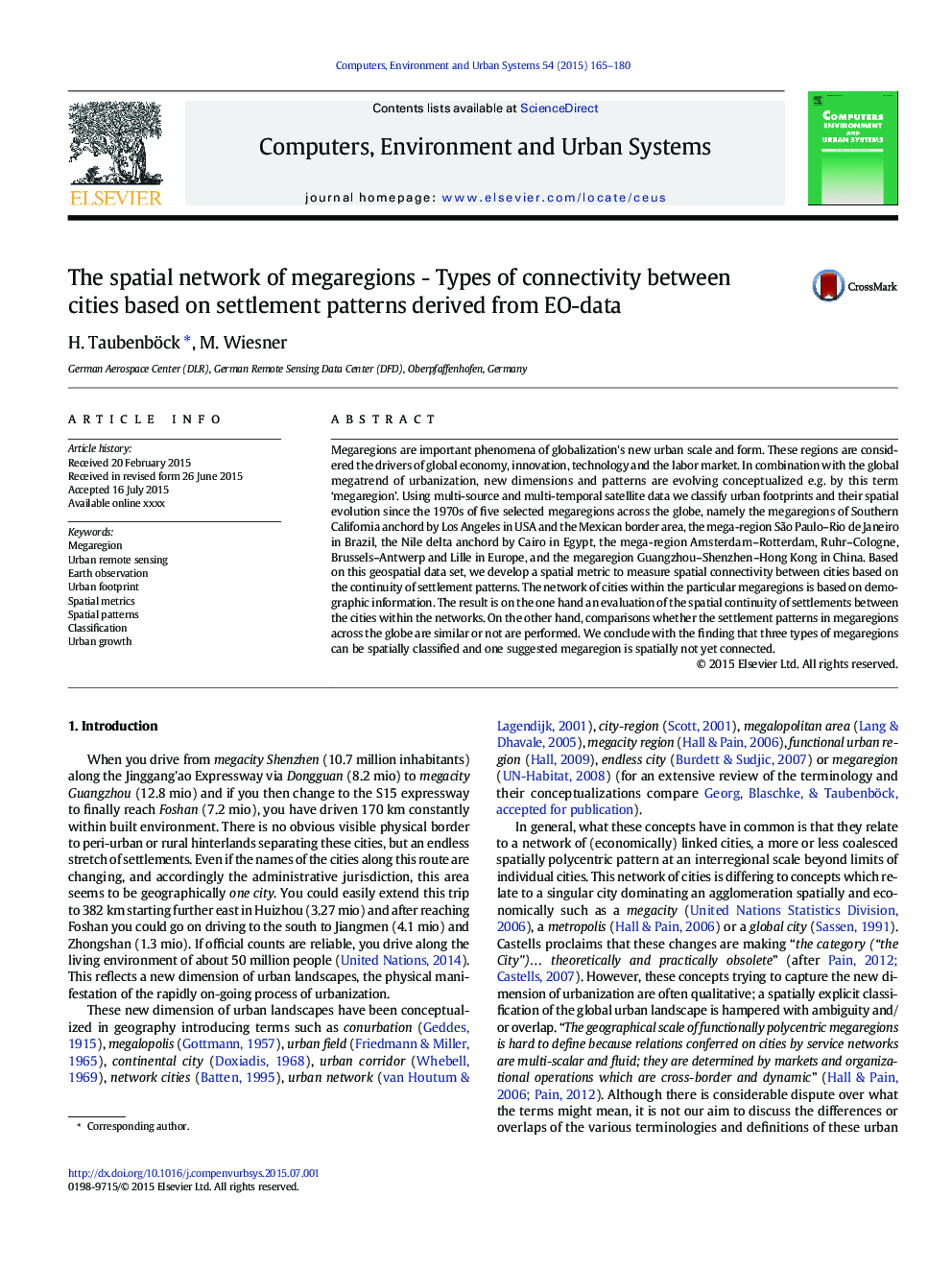| Article ID | Journal | Published Year | Pages | File Type |
|---|---|---|---|---|
| 6921935 | Computers, Environment and Urban Systems | 2015 | 16 Pages |
Abstract
Megaregions are important phenomena of globalization's new urban scale and form. These regions are considered the drivers of global economy, innovation, technology and the labor market. In combination with the global megatrend of urbanization, new dimensions and patterns are evolving conceptualized e.g. by this term 'megaregion'. Using multi-source and multi-temporal satellite data we classify urban footprints and their spatial evolution since the 1970s of five selected megaregions across the globe, namely the megaregions of Southern California anchord by Los Angeles in USA and the Mexican border area, the mega-region São Paulo-Rio de Janeiro in Brazil, the Nile delta anchord by Cairo in Egypt, the mega-region Amsterdam-Rotterdam, Ruhr-Cologne, Brussels-Antwerp and Lille in Europe, and the megaregion Guangzhou-Shenzhen-Hong Kong in China. Based on this geospatial data set, we develop a spatial metric to measure spatial connectivity between cities based on the continuity of settlement patterns. The network of cities within the particular megaregions is based on demographic information. The result is on the one hand an evaluation of the spatial continuity of settlements between the cities within the networks. On the other hand, comparisons whether the settlement patterns in megaregions across the globe are similar or not are performed. We conclude with the finding that three types of megaregions can be spatially classified and one suggested megaregion is spatially not yet connected.
Keywords
Related Topics
Physical Sciences and Engineering
Computer Science
Computer Science Applications
Authors
H. Taubenböck, M. Wiesner,
